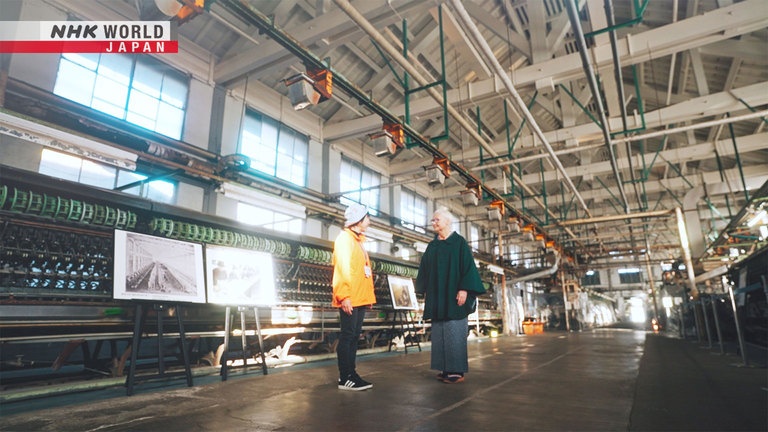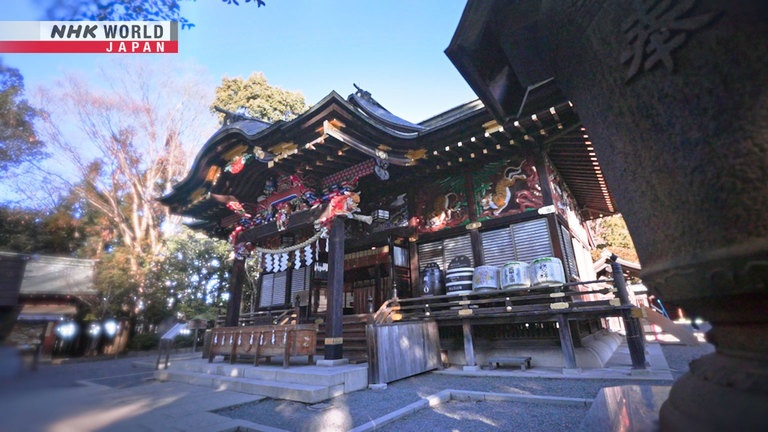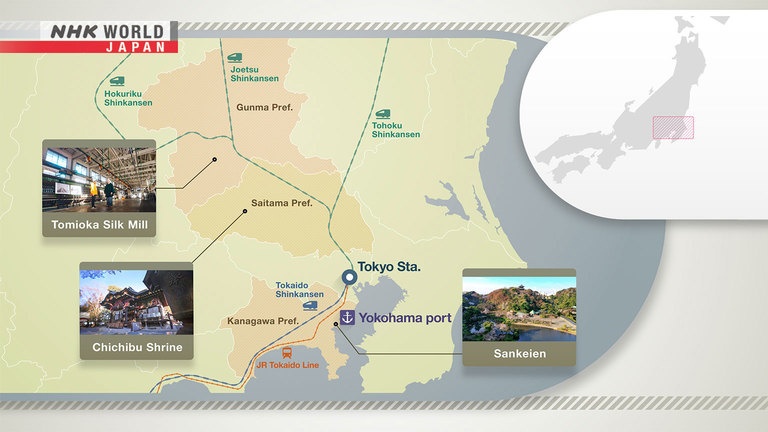SILK Road: Threads of History from Gunma to Yokohama
In 1859, when Japan reopened its doors after more than two centuries of isolation, goods flowed in and out of newly expanded ports. At the time, raw silk became the country's largest export, as the silk industries in France and Italy had been hit by an epidemic of silkworm disease. At one point, Japan was the world's biggest exporter. On this episode of Journeys in Japan, Sheila Cliffe from the UK follows the Silk Road from northern Kanto, once a major production area, to Yokohama, where the silk took off to the world.
Tomioka Silk Mill

Japan's first government-operated mechanized silk mill was established in 1872 in Tomioka City, Gunma Prefecture. The World Heritage Site is open to the public.
Chichibu Shrine

The shrine has deep ties to the silk industry. Once a year, silkworm farmers make offerings of cocoons to express their gratitude.
Sankeien Garden

The formal Japanese garden was built by the entrepreneur Hara Sankei, who made his fortune in the silk trade. He relocated significant buildings and art to the sprawling site.
Access

To reach the Tomioka Silk Mill from Tokyo, it takes about one hour and forty minutes by Shinkansen to Takasaki with a transfer to a local line. Chichibu is about an hour from Tokyo's Ikebukuro. Trains from Tokyo to Yokohama take around thirty minutes.